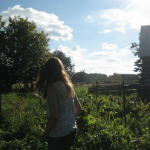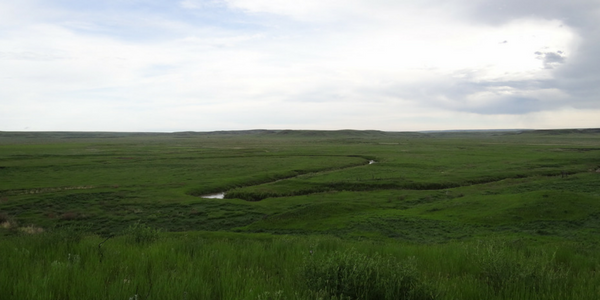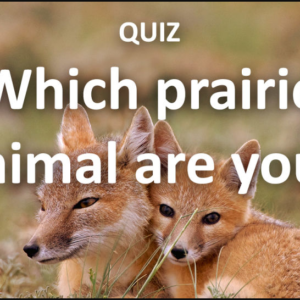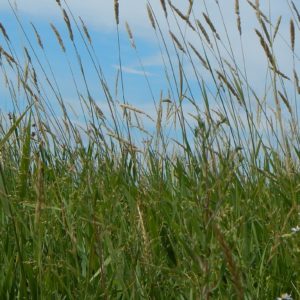Prairie Grasslands: Our Most Threatened Ecosystem

Blair Scott,
Guest Blogger
This blog was written by guest blogger Blair Scott.
Since the dismantling of the Prairie Farm Rehabilitation Administration (PFRA) by the Harper government in 2012, ranchers (so-called pasture patrons), nature groups and First Nations have debated how best to conserve the ecologically important community pastures formerly managed by the PFRA while maintaining livestock grazing on those pastures. Now Southwest Television News (SWTV) concisely illustrates these management challenges with this short clip Community Lands Lost: Canada’s Fate at Stake (2013). In this video, stakeholders and conservation organizations explain what is happening on the community pastures and what needs to happen in order for conflict to be resolved.
Members of the ranching community have been struggling to find resources to address issues such as invasive species and species at risk while maintaining livestock production. To many, it seems that the federal government has abandoned these grasslands, creating a mess for Saskatchewan and the pasture patrons to sort out with no help. At the heart of the Community Pasture Program was a cohesive system of multiple-field experts working together on several matters – from livestock husbandry to species rehabilitation and habitat monitoring. Since the federal government terminated the program, those intricate ties have unravelled, creating tensions between the several interest groups.
Lack of planning by the federal government prior to 2012 has left patrons overloaded and devoid of sufficient direction. The pressure to act – while feeling financially-burdened – is worsened by the looming invasions of the oil and gas industry, and the worry that foreign investors might drive up land prices. Before anything can move forward, key stakeholders must come together to establish a common purpose. Furthermore, clear direction and support must be offered to the individuals who feel they have been dragged into this dilemma.
Ultimately, the wellbeing of the grasslands ecosystem will depend on community cooperation. In addition, public involvement in land conservation is seen as essential, as management rooted in ecological stewardship provides benefits that reach far beyond private boundaries. In the end, everyone is accountable for the health of the ecosystem supporting them.

Nature Canada has written numerous blogs about the importance of grassland ecosystems and the unique creatures that inhabit them. These concerns led to a petition titled Save Canada’s Prairie Grasslands! Put the Transfers on Hold! In sum, Nature Canada is calling for a hold on the transfer of these lands until nature conservation measures are put in place.
Other Canadian conservation groups have also been working to save threatened prairie grasslands through campaigns to restore populations of iconic species such as the Greater Sage-Grouse and the Burrowing Owl. While both these animals are listed as endangered under the Species at Risk Act (SARA), time will tell if measures to restore degraded habitat and maintain quality habitat enable their populations to revive in Canada. For more details about these species, check out Operation Burrowing Owl or the Emergency Order for the Protection of the Greater Sage-Grouse.
Nashlyn and Battle Creek– former PFRA pastures in southwestern Saskatchewan – are proposed for protection as Cooperative Wildlife Management Areas under the Canadian Wildlife Act. These areas are already encompassed within an Important Bird Area (IBA) boundary – alongside Govenlock (another former PFRA pasture).
According to Public Pastures-Public Interest (PPPI), Battle Creek hosts thirteen species at risk, while the Nashlyn site contains six. Battle Creek has also been listed as a pasture containing “critical habitat,” meaning habitat that is absolutely necessary for species recovery and survival.
In August 2015, the federal government announced that the Govenlock community pasture (mainly federal land, unlike Battle Creek and Nashlyn) was transferred from Agriculture and Agrifood Canada to Environment and Climate Change Canada, creating at least the possibility that a National Wildlife Area would be established. Conservation of all three of these contiguous community pastures would be a huge step forward for grasslands biodiversity.
[button link=”https://naturecanada.ca/save-wilderness-now/” size=”medium” target=”_self” color=”red” lightbox=”false”]Learn about other proposed protected areas and how you can save wilderness now![/button]



